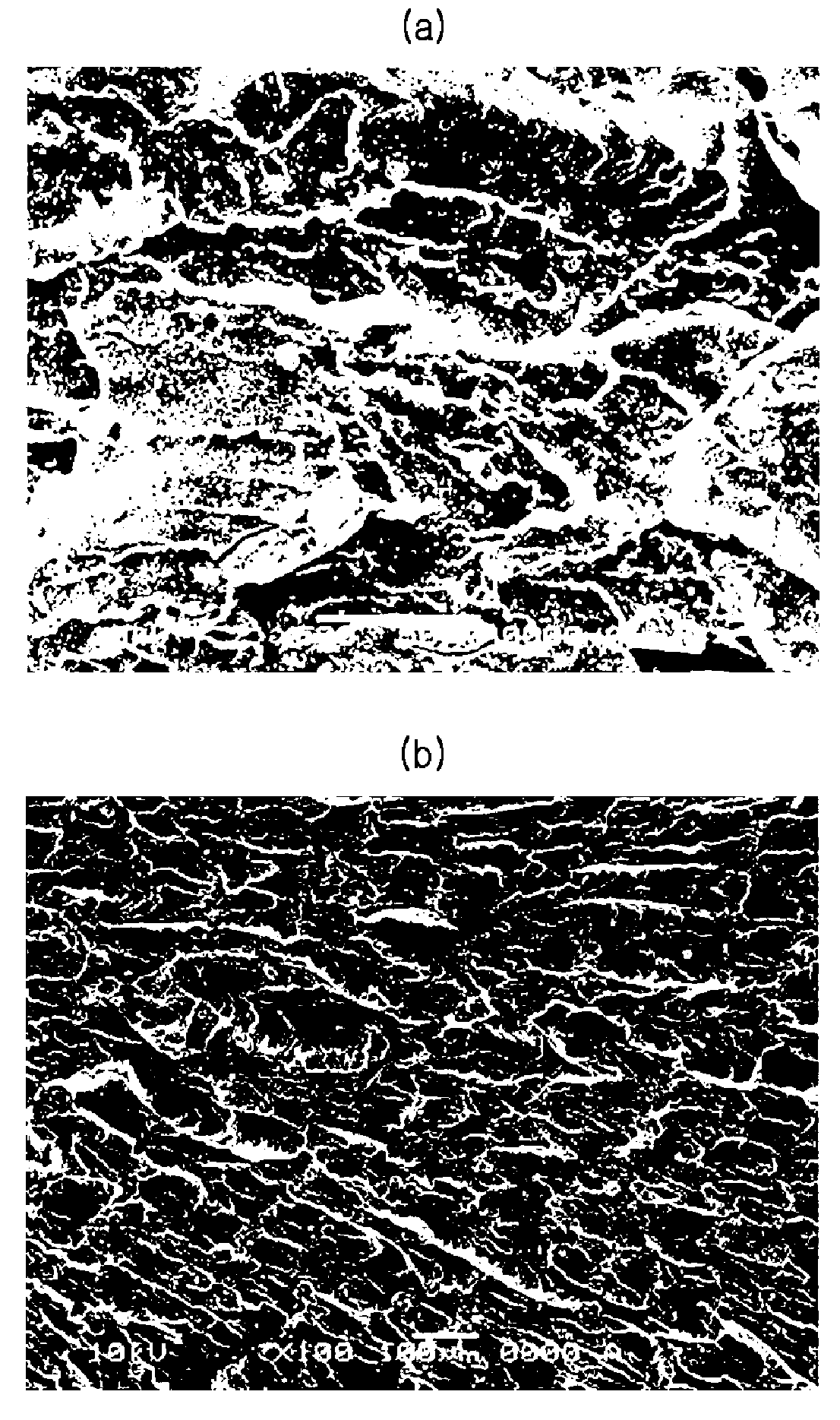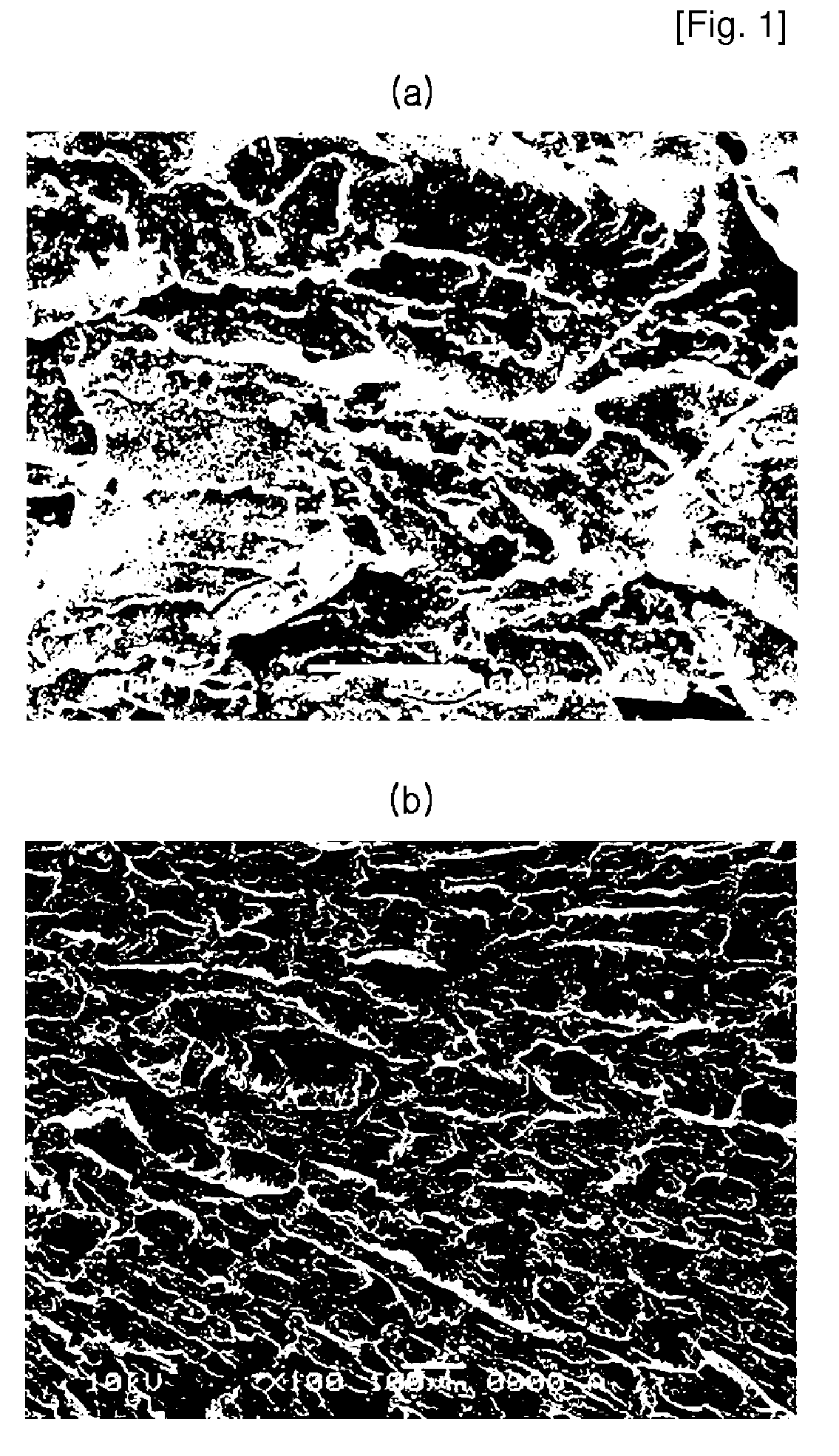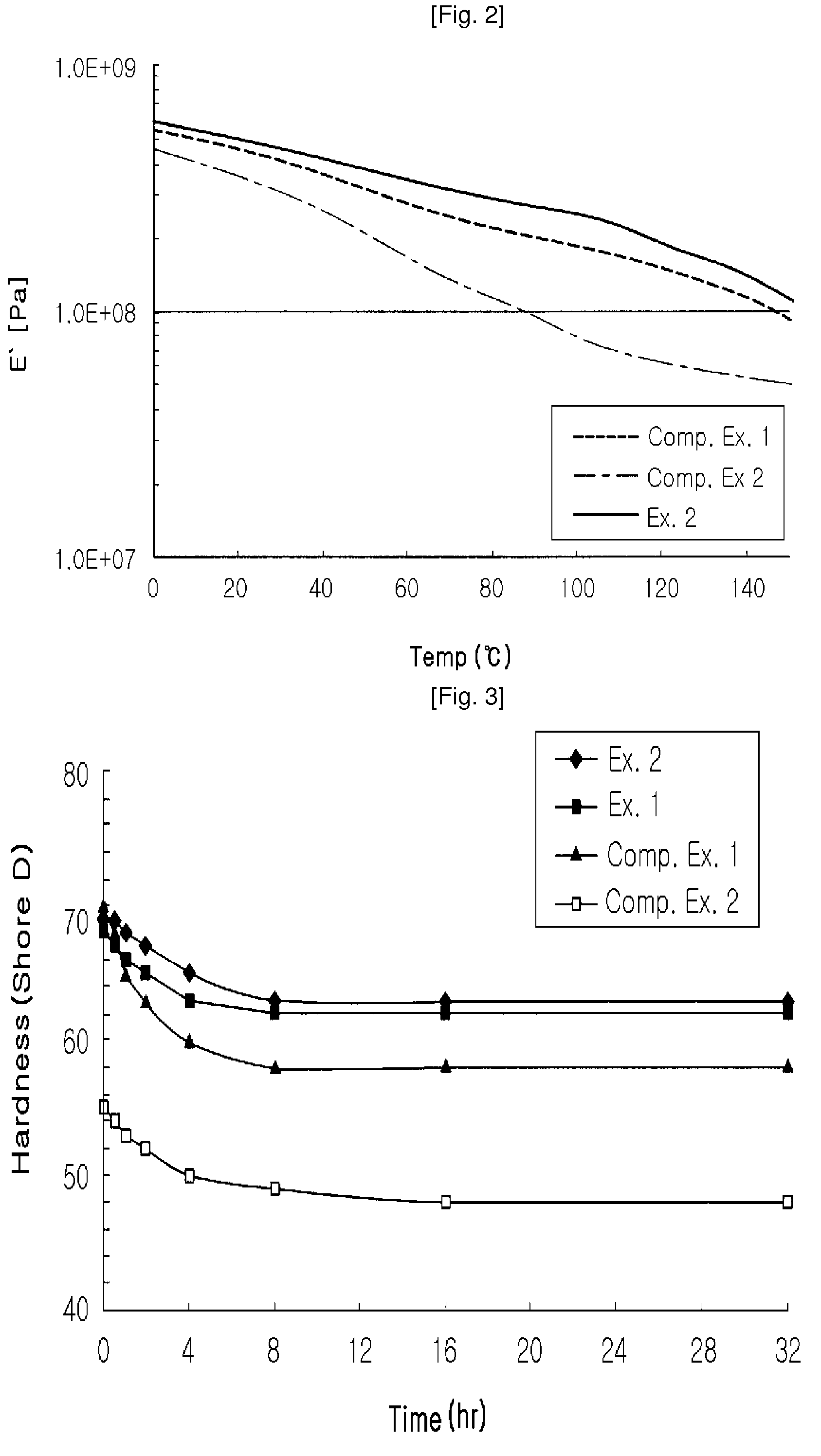Polishing pad containing interpenetrating liquified vinyl monomer network with polyurethane matrix therein
a polyurethane matrix and polyurethane matrix technology, applied in the field of polyurethane polishing pads, can solve the problems of incorporated materials, uneven thickness of polyurethane matrix, etc., to achieve stable polishing and stable heat resistance
- Summary
- Abstract
- Description
- Claims
- Application Information
AI Technical Summary
Benefits of technology
Problems solved by technology
Method used
Image
Examples
example 1
[0050]This example is intended to prepare a vinyl oligomer. 0.2% by weight of azobisisobutyronitrile and 44% by weight of a 70:30 mixture of styrene and acrylonitrile were added to a mixing vessel to which 12% by weight of isobutyl alcohol as a chain-transfer solvent was then added. Thereafter, 43.6% by weight of xylene as a chain-transfer solvent and 0.2% by weight of azobisisobutyronitrile as a radical catalyst were added to the reaction vessel.
[0051]Moisture was removed from the reaction vessel to which the mixture of the mixing vessel was then added in a gaseous phase over 2 hours to allow for polymer polymerization. After addition of the mixture was complete, the reactants were aged for 1 hour under the same conditions. After aging of the vinyl monomer was complete, the remaining unreacted styrene and acrylonitrile monomers were removed under reduced pressure.
[0052]The thus-obtained vinyl oligomer is a liquid styrene-acrylonitrile co-oligomer having a molecular weight of less t...
example 2
[0053]100 g of a polyether polyol (functionality=2, and Mw=1000) was charged into a vessel to which 51.2 g of 4,4′-phenylmethane diisocyanate (MDI) was then added. The temperature of the reaction vessel in which two solutions were mixed was elevated to 80° C. and the mixture was reacted with stirring for 3 hours, thereby preparing a prepolymer having isocyanate groups at both ends thereof (Main material #1).
[0054]300 g of 4,4′-methylenebis(o-chloroaniline) was charged into a vessel to which 100 g of a polyether polyol was then added. Herein, the temperature of the mixing vessel was maintained in a range not exceeding 130° C. Then, the defoaming process was carried out with mixing for more than 3 hours to completely remove the remaining gas bubbles from the solution, thereby preparing a curing agent (curing agent #1). The resulting curing agent was mixed with the styrene-acrylonitrile co-oligomer synthesized in Example 1: styrene monomer:acrylonitrile (50 g:50 g:50 g).
[0055]The above...
example 3
[0060]In order to prepare a main material, 100 g of a polyether polyol (functionality=2, and Mw=1000) was charged into a vessel to which 51.2 g of MDI was then added. The reaction vessel in which two solutions were mixed was maintained at 80° C. for 3 hours under stirring, thereby preparing a prepolymer having isocyanate groups at both ends thereof.
[0061]In order to prepare a curing agent, 300 g of 4,4′-methylenebis(o-chloroaniline) was charged into a vessel to which 100 g of a polyether polyol was then added. Herein, the temperature of the mixing vessel was maintained in a range not exceeding 130° C. Thereafter, the defoaming process was carried out with mixing for more than 3 hours to completely remove the remaining gas bubbles from the solution, thereby preparing a curing agent. In this Example, 200 g of a liquid styrene monomer was mixed.
[0062]The above-prepared main material and curing agent were mixed in a urethane reaction equivalent ratio of 1:1 at 80° C. and the resulting m...
PUM
| Property | Measurement | Unit |
|---|---|---|
| density | aaaaa | aaaaa |
| half life | aaaaa | aaaaa |
| temperature | aaaaa | aaaaa |
Abstract
Description
Claims
Application Information
 Login to View More
Login to View More - R&D
- Intellectual Property
- Life Sciences
- Materials
- Tech Scout
- Unparalleled Data Quality
- Higher Quality Content
- 60% Fewer Hallucinations
Browse by: Latest US Patents, China's latest patents, Technical Efficacy Thesaurus, Application Domain, Technology Topic, Popular Technical Reports.
© 2025 PatSnap. All rights reserved.Legal|Privacy policy|Modern Slavery Act Transparency Statement|Sitemap|About US| Contact US: help@patsnap.com



